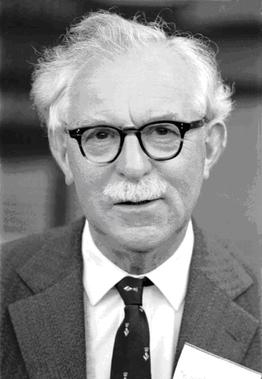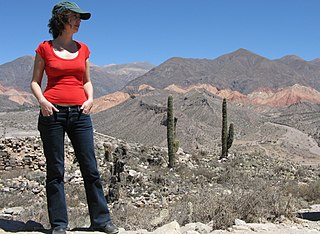
Ethnobotany is the study of a region's plants and their practical uses through the traditional knowledge of a local culture and people. An ethnobotanist thus strives to document the local customs involving the practical uses of local flora for many aspects of life, such as plants as medicines, foods, intoxicants and clothing. Richard Evans Schultes, often referred to as the "father of ethnobotany", explained the discipline in this way:
Ethnobotany simply means ... investigating plants used by societies in various parts of the world.

Richard Evans Schultes was an American biologist, considered to be the father of modern ethnobotany. He is known for his studies of the uses of plants by indigenous peoples, especially the indigenous peoples of the Americas. He worked on entheogenic or hallucinogenic plants, particularly in Mexico and the Amazon, involving lifelong collaborations with chemists. He had charismatic influence as an educator at Harvard University; several of his students and colleagues went on to write popular books and assume influential positions in museums, botanical gardens, and popular culture.

The Linnean Medal of the Linnean Society of London was established in 1888, and is awarded annually to alternately a botanist or a zoologist or to one of each in the same year. The medal was of gold until 1976, and is for the preceding years often referred to as "the Gold Medal of the Linnean Society", not to be confused with the official Linnean Gold Medal which is seldom awarded.
Brittonia is a quarterly, peer-reviewed botanical journal, publishing articles on plants, fungi, algae, and lichens. Published since 1931, it is named after the botanist Nathaniel Lord Britton. Since 2007, the journal has been published by Springer on behalf of the New York Botanical Garden Press, the New York Botanical Garden's publishing program. The current subtitle is: "A Journal of Systematic Botany". Currently, the journal is published quarterly, in both a paper and an online version. The editor-in-chief is Benjamin M. Torke.

William Thomas Stearn was a British botanist. Born in Cambridge in 1911, he was largely self-educated and developed an early interest in books and natural history. His initial work experience was at a Cambridge bookshop, but he also had a position as an assistant in the university botany department. At the age of 29 he married Eldwyth Ruth Alford, who later became his collaborator, and he died in London in 2001.
Sir Ghillean Tolmie Prance is a prominent British botanist and ecologist who has published extensively on the taxonomy of families such as Chrysobalanaceae and Lecythidaceae, but drew particular attention in documenting the pollination ecology of Victoria amazonica. Prance is a former Director of the Royal Botanic Gardens, Kew.

Paul Alan Cox is an American ethnobotanist whose scientific research focuses on discovering new medicines by studying patterns of wellness and illness among indigenous peoples. Cox was born in Salt Lake City in 1953.
The American Society of Plant Taxonomists (ASPT) is a botanical organization formed in 1935 to "foster, encourage, and promote education and research in the field of plant taxonomy, to include those areas and fields of study that contribute to and bear upon taxonomy and herbaria", according to its bylaws. It is incorporated in the state of Wyoming, and its office is at the University of Wyoming, Department of Botany.

Parinari is a genus of plant in the family Chrysobalanaceae.

Alwyn Howard Gentry was an American botanist and plant collector, who made major contributions to the understanding of the vegetation of tropical forests.
William Hardy Eshbaugh III is Professor Emeritus of Botany at Miami University, known primarily for his research on chili peppers and one of three authors of the seminal work covering the flora and biogeography of the Bahamas.
Jan Salick is an American botanist who researches the interaction between humans and plants (ethnobotany) and conservation biology. Her specialisms include alpine environments, climate change, indigenous peoples and traditional knowledge. She is a past-president of the Society for Economic Botany and holds their Distinguished Economic Botanist award. She is also Fellow of the American Association for the Advancement of Science and received the Fairchild Medal for Plant Exploration. In 2019 she retired as Senior Curator of Ethnobotany at the Missouri Botanical Garden, and now has emerita status.

Ina Vandebroek is an ethnobotanist working in the areas of floristics, ethnobotany and community health. Since 2005, she has worked at the New York Botanical Garden in the Institute of Economic Botany. She has worked on ethnobotanical projects in North America, the Caribbean, and South America.
Jean H. Langenheim was an American plant ecologist and ethnobotanist, highly respected as an eminent scholar and a pioneer for women in the field. She has done field research in arctic, tropical, and alpine environments across five continents, with interdisciplinary research that spans across the fields of chemistry, geology, and botany. Her early research helped determine the plant origins of amber and led to her career-long work investigating the chemical ecology of resin-producing trees, including the role of plant resins for plant defense and the evolution of several resin-producing trees in the tropics. She wrote what is regarded as the authoritative reference on the topic: Plant Resins: Chemistry, Evolution, Ecology, and Ethnobotany, published in 2003.
Brian Morey Boom is an American botanist who specializes in the flora of the Guianas and the Caribbean, the family Rubiaceae, ethnobotany, and economic botany.

Scott Alan Mori was a swiss and american botanist and plant collector. He specialized in the systematics and ecology of neotropical Lecythidaceae and Amazonian and Guianian floristics.

Charles Bixler Heiser Jr. (1920–2010) was a professor of botany, known as a leading expert on the sunflower genus Helianthus. He is also noteworthy as the author of a "series of popular books that did much to promote botany to the general public."

Michael Jeffrey Balick is an American ethnobotanist, economic botanist, and pharmacognosist, known as a leading expert on medicinal and toxic plants, biocultural conservation and the plant family Arecaceae (palms).
Grenville 'Gren' Llewellyn Lucas was a British botanist, conservationist, and Keeper of the Herbarium and Library at Kew Gardens.

Rainer W. Bussmann is a German botanist and vegetation ecologist, specializing in ethnobotany and ethnobiology, wild food plants, wild crop relatives, climate change, gastronomic botany and preservation of traditional knowledge in the Andes, the Caucasus and the Himalayas. He has worked at the University of Bayreuth, University of Hawaii, University of Texas, the Missouri Botanical Garden, Ilia State University and the State Museum of Natural History Karlsruhe; he has founded several international non-governmental organizations, including Nature and Culture International, Saving Knowledge, and Ethnomont.











